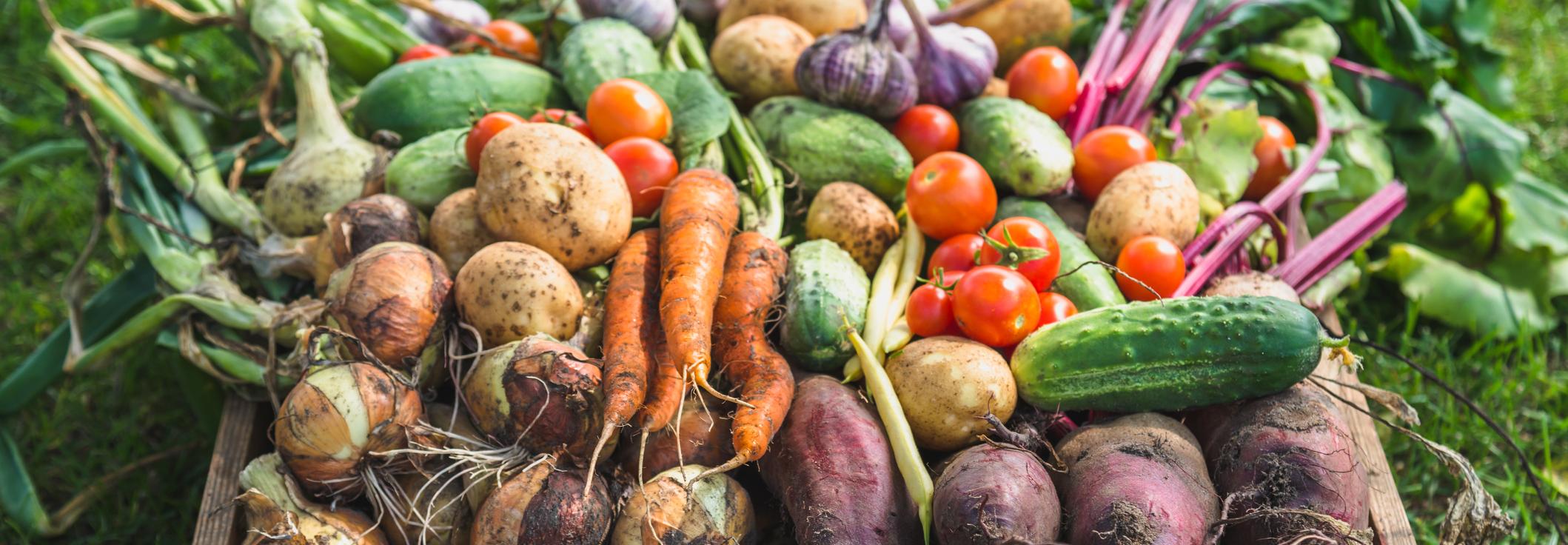
Although balancing home-schooling and work continues to be a challenge, it has been rather nice to return to my roots, teaching the kids some botany and getting them planting seeds. Although I can’t say my enthusiasm for growing food was the result of seeing depleted shelves in the supermarkets, it has undoubtedly influenced the behaviour of some others, with Horticulture Week reporting the trebling of ‘grow your own’ sales.
Of course, it was scary and strange to see some items nearly gone from the shops, and there is a natural response to take an extra one (just in case), even if we know we don’t need it. Access to food and supplies has been so easy for most of us for so long, that you can understand why the possibility of a break in supply would prompt people to buy extra and ensure they had enough for themselves and their families.
The truth is though, that the ‘other crisis’, climate change and the effect that our current way of living has had on our environment, has been easier to ignore. We know what we need to do, but most of us haven’t really been doing it, or where we have, it hasn’t perhaps had the focus it has now. Certainly, I have found myself thinking and reading a lot more about where my food has come from, how it is produced, who produces it, and how it gets to the store cupboard.
Eating sustainably isn’t just about whether you eat meat or not, or you buy organic or local, it is about appropriateness of land use, methods of production and distribution. It requires balancing production of food with other critical land use, such as forestry, fisheries and conservation. And not just on our own land, but also in the countries we import from, so that we can ensure we aren’t just building a future at the expense of others. When the picture is so complicated, our own contribution to reducing our impact on the climate can seem rather insignificant.
However, most recently I have found myself thinking a lot about how we distribute our produce, regardless of where it has come from. I am not a stranger to the online shop and the food box, but is that more or less sustainable than visiting a store? Online shopping was responsible for 1 in 7 purchases in 2019 and this has rocketed since the Covid-19 restrictions, with all supermarkets increasing their capacity for home delivery. But is this a good thing?
In a study of the environmental impact of New Zealand Lamb, they found that up to 19% of its total greenhouse gas emissions were the result of the consumer-related components of the farm to fork journey. Shipping (the part we tend to focus on when discussing the importance of buying local) was only 5%! Clearly on-farm emissions are still the most significant contributor to the footprint and remain the hardest to reduce. With farmers in New Zealand continuing to increase their conversion of pasture to meat, the low impact of shipping on that carbon footprint means that we can’t rest on our laurels when we describe local produce as ‘better for the environment’.
There are of course other benefits to buying local, such as supporting the community and local businesses, but the way we do this can still have a big environmental impact. For example, a report from the Chartered Institute of Logistics and Transport (CILT), found that wherever the product comes from, transport from the store to home, also known as the ‘last mile’, dominates the carbon footprint.
They found that whilst a 50-mile delivery round by van produces 21,665g of CO2, when this was divided equally among an average of 120 ‘drops’, each drop was responsible for just 181g of CO2. On the other hand, a standard return shopping trip by car of approximately 12.8 miles, generated 4,274g of CO2, 24 times more than the average home delivery.
Public transport, where shoppers took the bus to the shops, produced the least CO2 (other than walking or cycling of course) . When the bus had an average loading of just over nine passengers, each one of those passenger journeys produced 1,265g of CO2, which was seven times that of an average home delivery. However, as home delivery increases, so do the options for the fleet that makes this happen, and in January it was announced that the electric van maker ‘Arrival’ had secured a £339m order to produce 10,000 vehicles for United Parcel Service (UPS), the US delivery company.
A trial in London of using electric vans for distribution (in this case Voltia and Vic-Young electric vans), found they used five times less energy per km than their diesel equivalents. As they had larger payload volumes, they delivered on average 30 per cent more parcels per week compared to smaller vehicles – helping to reduce congestion by making fewer trips. The overall electricity cost for charging up the trial vans was 75 per cent less than the fuel costs to run their diesel equivalents (based on 2019 prices) but the socio-environmental benefits associated with electric vans replacing diesel equivalents (including cutting greenhouse gas emissions) equated to an estimated 1.8p to 2.6p benefit, per km driven, to Greater London. The total CO2 emissions savings between November 2017 and end of September 2019 were (as well as NOx reductions) 77.9 t which is apparently the equivalent to roughly 142 return trips from Land’s End to John O’Groats by road using a diesel van.
Of course, the carbon cost of walking that ‘last mile’ to your local high street or increasing the amount we produce at home has even more potential for carbon savings. However, as I watch a football destroy my cucumbers (again), I don’t see ‘The Good Life’ becoming a reality for me any time soon.